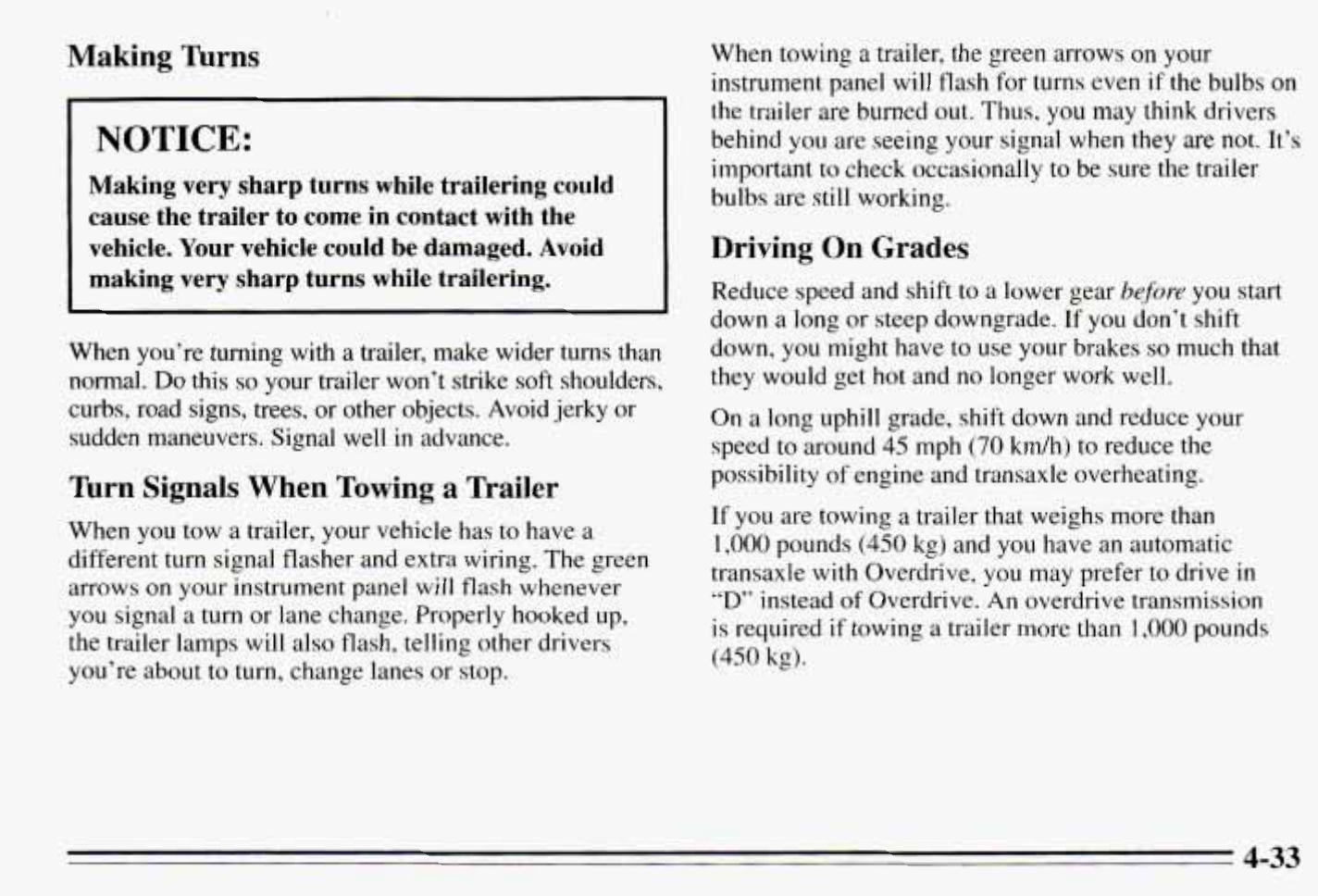
Making Turns
r
1
NOTICE:
Making very sharp turns while trailering could
cause the trailer to come in contact with
the
vehicle. Your vehicle could be damaged. Avoid
making very sharp turns while trailering.
When you’re turning with a trailer, make wider turns than
normal.
Do
this
so
your trailer won’t strike soft shoulders.
curbs, road signs, trees, or other objects. Avoid jerky or
sudden maneuvers. Signal well in advance.
Turn Signals When Towing a Trailer
When you tow
a
trailer, your vehicle has to have a
different turn signal flasher and extra wiring. The green
arrows on your instrument panel
will
flash whenever
you
signal a turn or lane change. Properly hooked up,
the trai1e.r lamps will also flash, telling other drivers
you’re about
to
turn, change lanes or stop.
When towing
a
trailer, the green arrows on your
instrument panel will flash for turns even
if
the bulbs on
the trailer are burned out. Thus, you may think drivers
behind you are seeing your signal when
they
are not. It’s
important to check occasio~~ally to be sure the trailer
bulbs are still working.
Driving On Grades
Reduce speed and shift
to
a lower gear
bqfbre
you start
down
a
long or steep downgrade. If
you
don’t shift
down, you might have to use your brakes
so
much that
they would get
hot
and no longer work well.
On a long uphill grade,
shift
down and reduce your
speed to around
45
mph
(70
km/h) to reduce the
possibility of engine and transaxle overheating.
If
you are towing a trailer that weighs more than
1,000
pounds
(450
kg) and you have an automatic
transaxle
with
Overdrive,
you
may prefer to drive
in
“D” instead
of
Overdrive.
An
overdrive transmission
is required
if
towing a trailer more than
1,000
pounds
(450
kg).
4-33


















